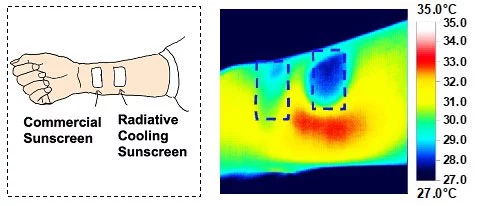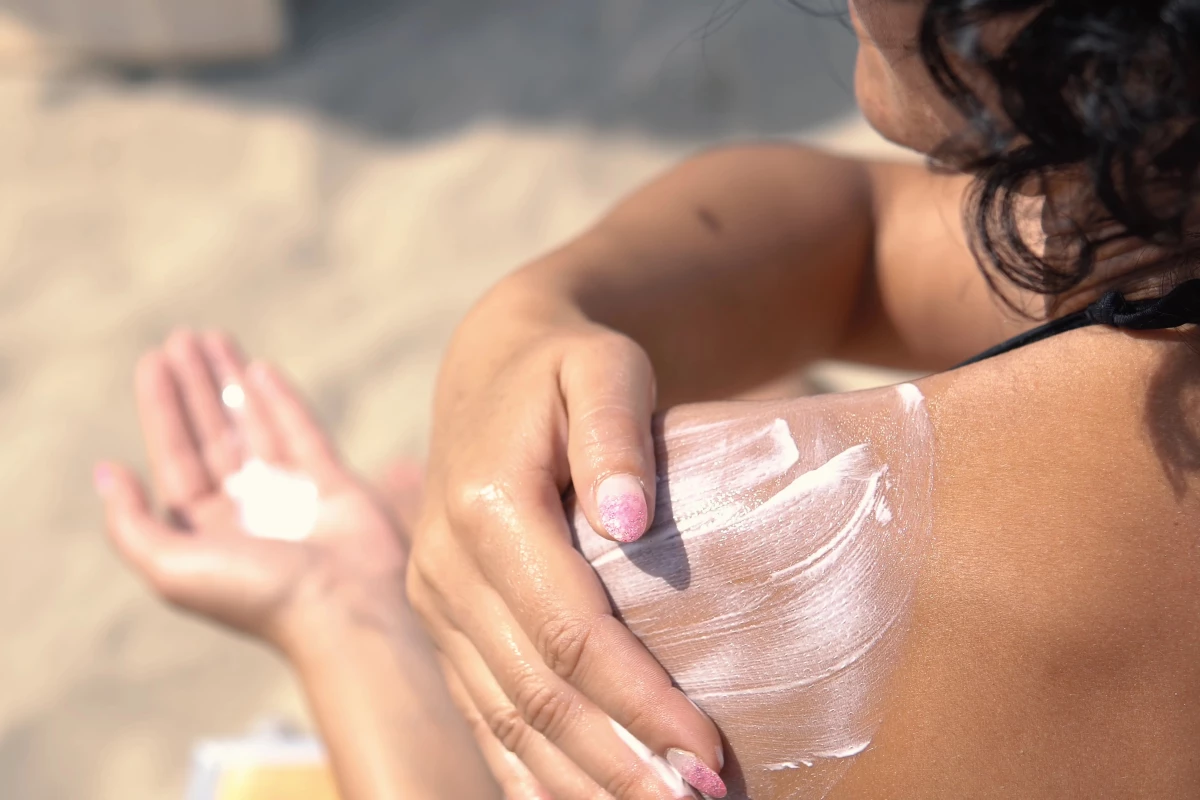Although sunscreen does help protect our skin from the sun's harmful UV rays, it isn't designed to keep that skin cool. An experimental new sunscreen does that very thing, however, while maintaining an SPF rating of about 50.
Commonly used mineral-based sunscreens typically incorporate minuscule particles of titanium dioxide and/or zinc oxide.
These nanoparticles reflect much of the ultraviolet light that is present in sunlight, keeping it from reaching and damaging the underlying skin. The particles are too small, however, to reflect the sun's heat-energy-transferring infrared light. As a result, people wearing sunscreen can still get uncomfortably or even dangerously hot.
Assoc. Prof. Rufan Zhang and colleagues at China's Tsinghua University recently set out to change that, by painstakingly tweaking the size of titanium dioxide nanoparticles. The scientists were ultimately able to produce particles that still reflected UV light while also reflecting a substantial amount of infrared light.
The nanoparticles couldn't do the job on their own, however, so they were mixed with deionized water, ethanol, Nivea moisturizing cream, skin-colored iron-oxide pigments, and a silicone polymer known as polydimethylsiloxane (which is commonly used in cosmetics).

When the resulting sunscreen was tested on human volunteers in a hot and sunny outdoor setting, it was found to decrease their skin temperature by up to 6.1 ºC (11 ºF) as compared to commercial sunscreens, and by 6.0 ºC (10.8 ºF) as compared to no sunscreen at all.
It additionally demonstrated an SPF effect of approximately 50, plus it remained effective – and water-resistant – after 12 hours of simulated sunlight exposure via a xenon lamp. What's more, tests performed on both mice and people showed that it didn't irritate the skin.
The scientists estimate that the heat-reflecting sunscreen would cost about 92 cents per 10 grams (0.4 oz) to produce on a commercial scale, reportedly putting it "on par" with existing commercial sunscreens.
A paper on the research was recently published in the journal Nano Letters.
Source: American Chemical Society




